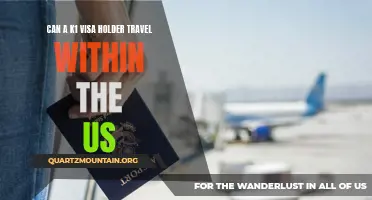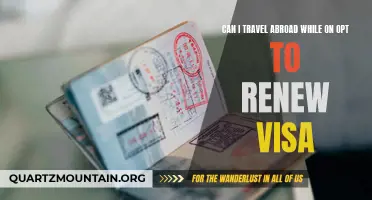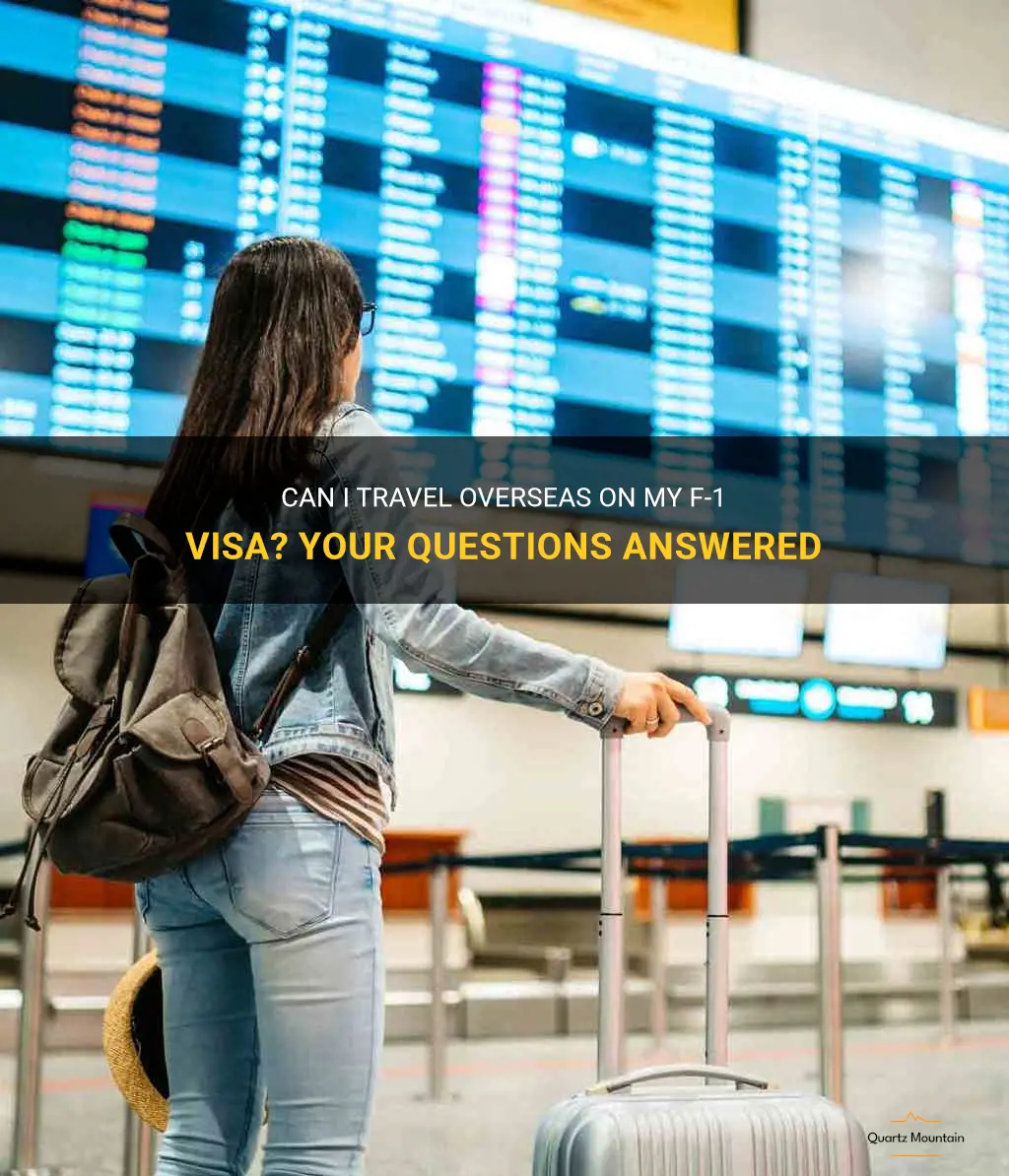
The world is a vast and fascinating place, full of different cultures, languages, and experiences waiting to be explored. For students studying on an F-1 visa, the desire to travel overseas may be strong, but the rules and regulations surrounding international travel can sometimes feel overwhelming. In this article, we will answer some of the most common questions about whether F-1 visa holders can travel overseas and provide some guidance to help you navigate the process. So, if you've been dreaming of exploring new countries and immersing yourself in different cultures, keep reading to find out what you need to know about traveling overseas on your F-1 visa.
| Characteristics | Values |
|---|---|
| Visa requirement | F-1 visa |
| Passport requirement | Valid passport |
| Travel restrictions | Varies by country |
| COVID-19 testing requirements | Varies by country |
| Quarantine requirements | Varies by country |
| Travel insurance requirement | Recommended |
| Valid I-20 and SEVIS record | Yes |
| Academic and financial standing | Good standing |
| Travel signature from designated school official | Required |
| Embassy/consulate appointment | May be required |
| Return flight ticket | Recommended |
| Visa expiration date | Must be valid |
| Country-specific travel advisories | Check travel advisories |
| Travel documents and copies | Carry necessary documents and copies |
What You'll Learn
- What are the limitations for traveling overseas on an F-1 visa?
- Are there any specific requirements or documentation needed for traveling overseas on an F-1 visa?
- Can I travel to any country on my F-1 visa or are there restrictions?
- How long can I stay outside of the United States on my F-1 visa without it affecting my status?
- Are there any specific steps I need to follow before traveling overseas on my F-1 visa?

What are the limitations for traveling overseas on an F-1 visa?
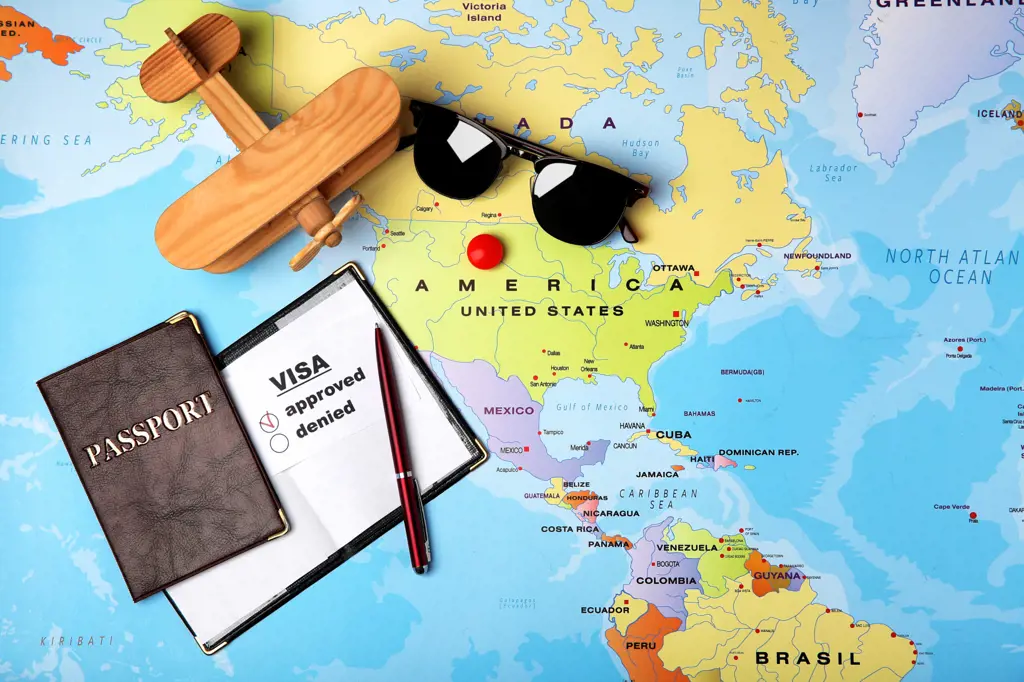
Traveling overseas on an F-1 visa is an exciting opportunity for international students studying in the United States. It allows them to explore new countries, cultures, and gain valuable experiences. However, there are certain limitations and considerations that students need to be aware of when planning their travel. In this article, we will discuss the limitations for traveling overseas on an F-1 visa and how students can navigate them.
Maintaining full-time student status:
One of the main limitations for traveling overseas on an F-1 visa is the requirement to maintain full-time student status. According to immigration regulations, international students must be enrolled in a full course of study during each academic term. This means that students need to be actively enrolled in a recognized educational institution and should not take a break from their studies for an extended period without prior approval.
Valid passport and visa:
Before planning any overseas trip, international students must ensure that their passport and F-1 visa are valid. It is important to check the expiration date of the passport and visa and make sure they are valid for at least six months beyond the intended return date. If either the passport or visa is about to expire or has already expired, students will need to renew them before traveling.
Travel signature:
Another limitation for traveling overseas on an F-1 visa is the requirement to have a valid travel signature on the Form I-20. The travel signature, usually obtained from the Designated School Official (DSO) at the student's educational institution, confirms that the student is in good standing and eligible to travel. The travel signature is valid for one year, so students should ensure that it is up to date before leaving the country. It is advisable to get the travel signature at least one week before the intended travel date to allow for any processing delays.
Valid documentation for re-entry:
When returning to the United States, international students must present valid documentation to re-enter the country. This includes a valid passport, F-1 visa, and Form I-20 with a valid travel signature. Additionally, students should carry any other relevant documentation, such as enrollment verification letters, transcripts, and financial statements, to demonstrate their continued eligibility for the F-1 visa.
Travel restrictions and visa requirements:
International students need to be aware of travel restrictions and visa requirements imposed by the country they plan to visit. Each country has its own set of entry requirements, such as visa applications, proof of financial means, and health insurance. It is essential to research and familiarize oneself with these requirements well in advance to avoid any travel disruptions or re-entry issues.
Consideration of visa processing time:
Students should also consider the visa processing time when planning their travel. It is advisable to start the visa application process early to allow for any unforeseen delays. Additionally, students should keep in mind that processing times may vary depending on the country they are applying from and the time of year.
In conclusion, traveling overseas on an F-1 visa comes with certain limitations and considerations. Students need to maintain full-time student status, ensure their documents are valid, obtain a travel signature, have valid documentation for re-entry, be aware of travel restrictions and visa requirements, and consider visa processing time. By understanding and adhering to these limitations, international students can have a smooth and enjoyable travel experience while on their F-1 visa.
Understanding the Travel Restrictions for H-4 Visa Holders: Can They Travel to the US?
You may want to see also

Are there any specific requirements or documentation needed for traveling overseas on an F-1 visa?
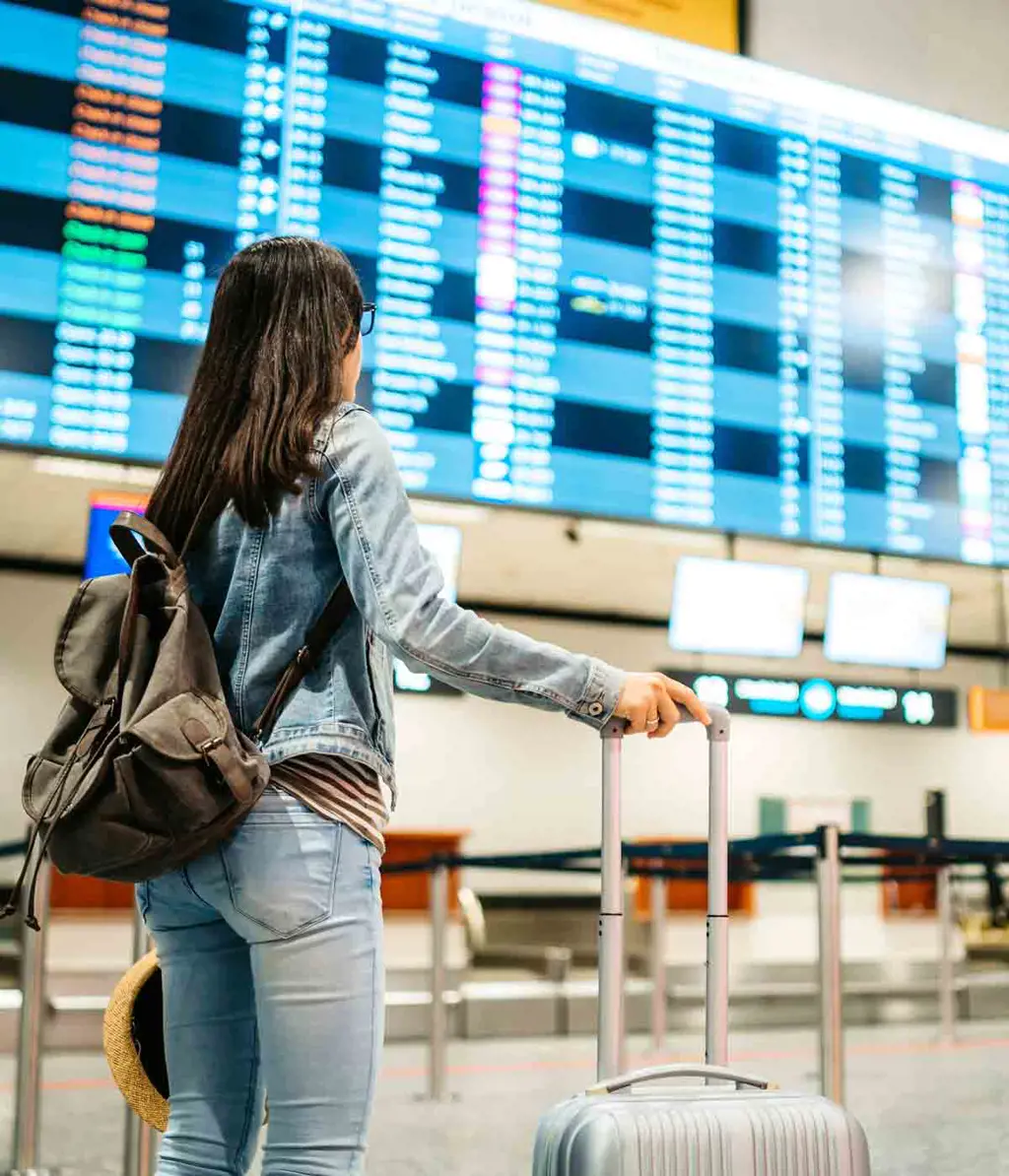
When traveling overseas on an F-1 visa, there are several specific requirements and documentation that you need to have in order to ensure a smooth and hassle-free journey. It is important to familiarize yourself with these requirements and make sure you have all the necessary documentation before you travel.
One of the most important requirements for traveling overseas on an F-1 visa is a valid passport. Your passport must be valid for at least six months beyond your intended return date. It is also recommended to check the expiration date of your F-1 visa stamp in your passport and make sure it is still valid.
In addition to a valid passport, you will need an unexpired Form I-20, which is the Certificate of Eligibility for Nonimmigrant Student Status. This form is issued by your designated school official (DSO) and serves as proof of your student status. Make sure to have the most recent version of your Form I-20 before you travel.
Another important document you will need is a valid F-1 visa stamp. This stamp is typically obtained from a U.S. embassy or consulate in your home country before you travel to the United States. The F-1 visa stamp allows you to enter and re-enter the United States as a student. It is essential to check the expiration date of your visa stamp and make sure it is still valid before traveling overseas.
In addition to these documents, you may also need to provide additional documentation such as a travel signature on your Form I-20. This travel signature is obtained from your DSO and confirms that you are in good standing with your school and eligible to travel. It is generally valid for one year. Make sure to check the expiration date of your travel signature and obtain a new one if necessary before you travel.
It is also a good idea to have a copy of your class schedule or enrollment verification letter from your school, as well as proof of financial support, such as bank statements or scholarship letters. These documents may be requested by immigration officials when you enter or re-enter the United States.
When traveling overseas on an F-1 visa, it is important to plan ahead and allow ample time to gather all the necessary documentation. Make sure to keep all your documents in a safe and easily accessible place, such as a travel folder or carry-on bag. It is also a good idea to make copies of all your documents and keep them in a separate location in case your originals are lost or stolen.
In conclusion, when traveling overseas on an F-1 visa, it is important to have a valid passport, a current Form I-20, a valid F-1 visa stamp, and any other necessary documentation such as a travel signature on your Form I-20. Make sure to check the expiration dates of these documents and obtain new ones if necessary before you travel. By being prepared and having all the necessary documentation, you can ensure a smooth and hassle-free journey.
Am I Eligible to Travel Under the Visa Waiver Program?
You may want to see also

Can I travel to any country on my F-1 visa or are there restrictions?
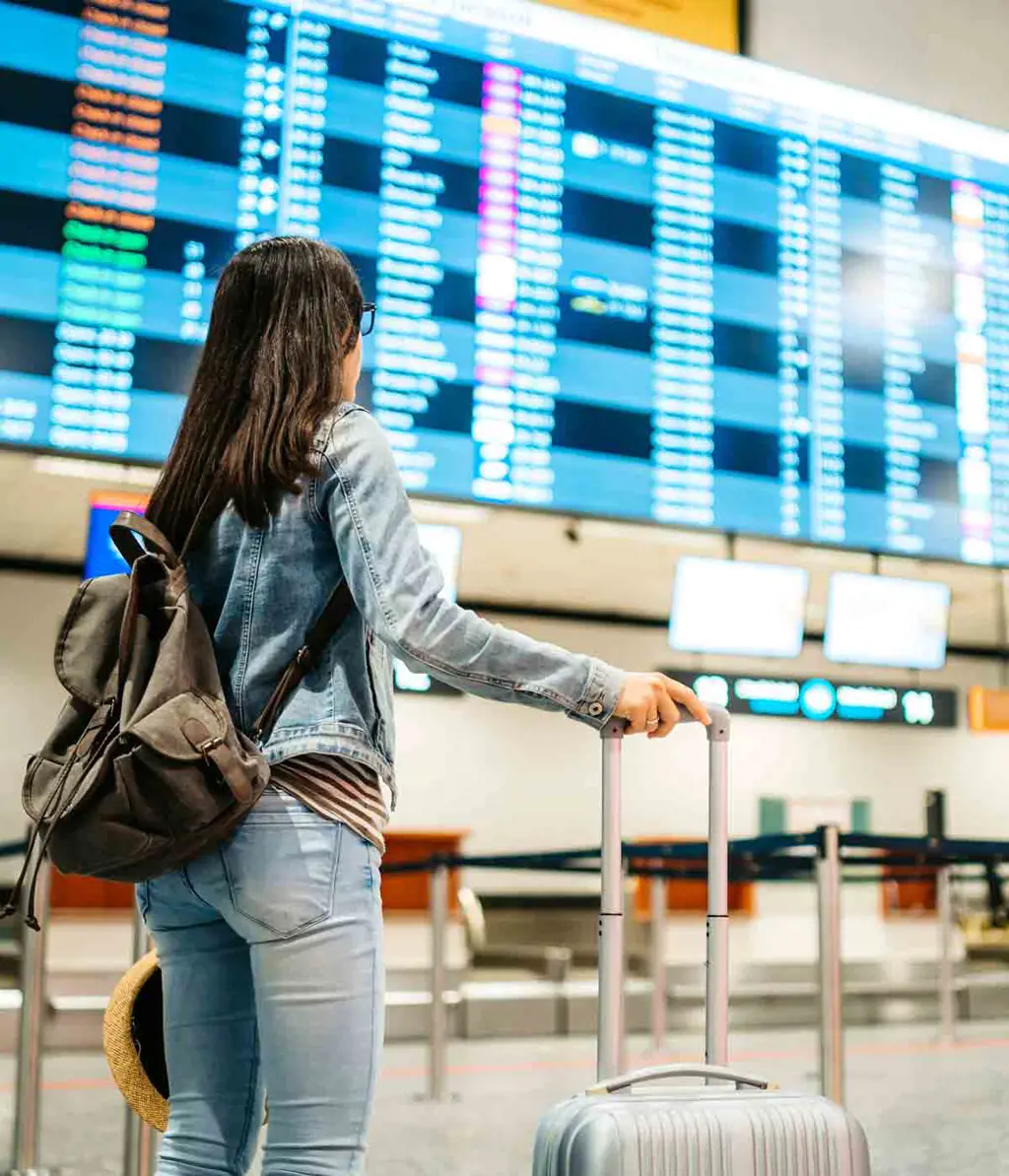
As an international student on an F-1 visa, you have the opportunity to experience life and education in the United States. However, when it comes to traveling, there are certain restrictions and considerations you need to be aware of.
- Travel during school breaks: It is generally safe to travel during school breaks, such as winter and summer vacations. During these times, you can visit your home country or explore other destinations. It is important to check the specific dates and length of your school breaks, as they may vary depending on your institution.
- Valid passport and visa: Before planning any travel, ensure that your passport is valid for at least six months beyond your intended date of return. Additionally, your F-1 visa should also be valid during the entire duration of your planned travel.
- SEVIS registration: As an international student, your SEVIS (Student and Exchange Visitor Information System) record needs to be active and up to date. Inform your designated school official (DSO) about your travel plans, as they need to update your record accordingly.
- Maintain full-time student status: To maintain your F-1 visa status, you must be enrolled as a full-time student and make progress towards completing your degree. During vacations and breaks, you can travel freely, but ensure that you return to the US in time for the start of the next semester.
- Travel within the US: You have the freedom to travel within the United States while on an F-1 visa. Whether it's exploring different states or visiting famous landmarks, you can embark on domestic trips without any restrictions.
- International travel: While you can travel to other countries on your F-1 visa, there are a few things to consider. First, make sure to check the travel restrictions and entry requirements of the country you plan to visit. Some countries may require you to obtain a visa or have certain documentation in addition to your passport and F-1 visa.
- Travel during OPT: If you are on Optional Practical Training (OPT) after completing your studies, you can travel outside the United States. However, ensure that you have all the necessary documents, such as your Employment Authorization Document (EAD), job offer letter, and a valid F-1 visa to reenter the US.
- Be prepared for visa interviews: When traveling internationally, you may be asked to attend a visa interview at the US embassy or consulate of the country you are visiting. Be prepared to provide relevant documentation, such as your I-20 form, financial statements, and proof of ties to your home country.
Example:
Let's say you are an international student from India studying in the US on an F-1 visa. During your winter break, you decide to travel to Europe. Before making any arrangements, you should check the visa requirements for all the countries you plan to visit. Some countries may grant you visa-free entry, while others may require you to obtain a visa before your trip.
Additionally, ensure that your passport is valid for at least six months beyond your intended return date and that your F-1 visa is still valid. Inform your DSO about your travel plans and make sure your SEVIS record is up to date.
Once you have all the necessary documents and permissions, you can embark on your trip to Europe. Make sure to carry your passport, F-1 visa, I-20 form, and other relevant documents with you. It is also a good idea to carry a copy of your transcript or enrollment verification letter to prove your full-time student status.
During your trip, be mindful of any visa interviews you may encounter at the embassies or consulates of the countries you visit. Prepare all the required documentation and answer any questions truthfully and confidently.
Overall, while there are restrictions and considerations when traveling on an F-1 visa, with proper planning and adherence to the rules, you can enjoy exploring different countries and cultures during your time as an international student in the United States.
How Can a Travel Agency Assist with Visa Application Submissions?
You may want to see also

How long can I stay outside of the United States on my F-1 visa without it affecting my status?
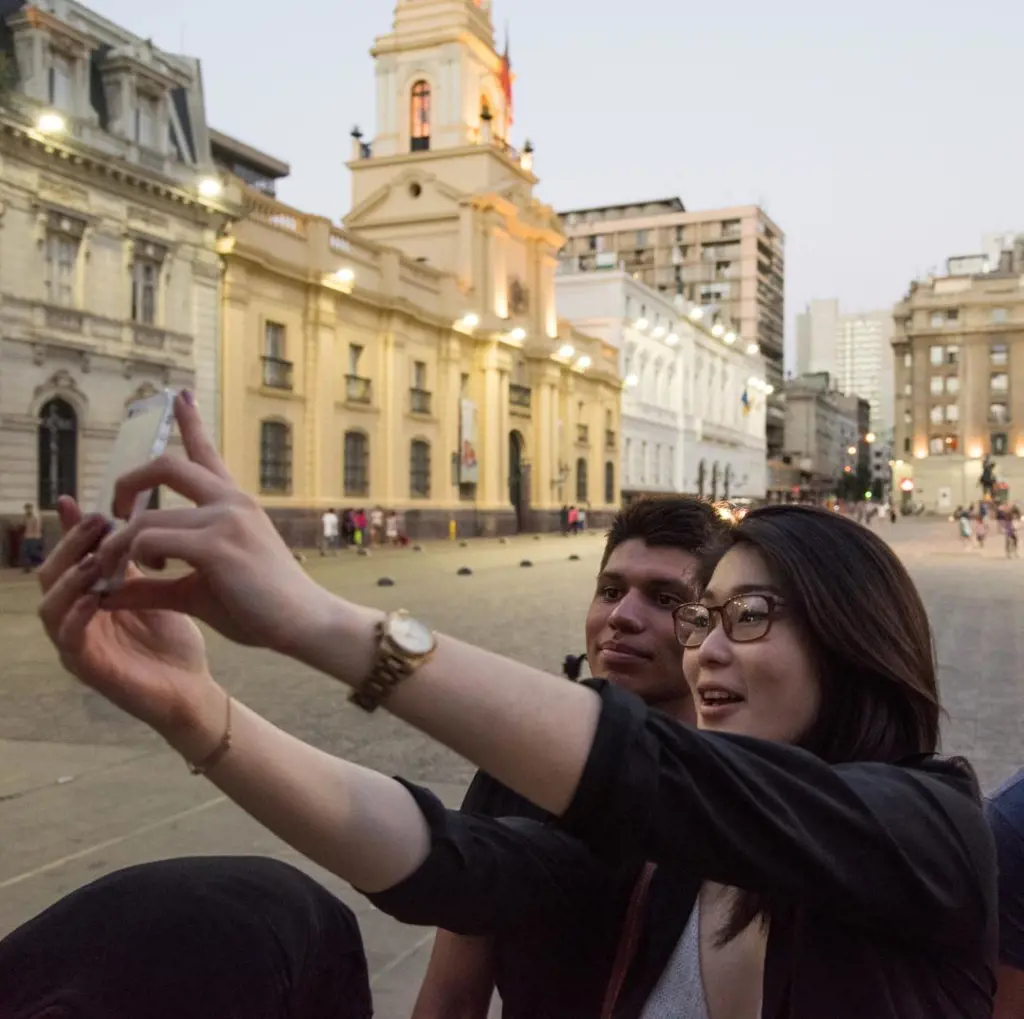
As an international student studying in the United States on an F-1 visa, you may occasionally need to travel outside of the country for personal or academic reasons. It is important to understand how long you can stay outside of the United States without it affecting your visa status. Here, we will explore the regulations surrounding this issue and provide some guidance on how to ensure you maintain your status.
Firstly, it is important to clarify that there is no specific time limit stated in the regulations regarding how long you can stay outside of the United States on your F-1 visa. However, there are certain guidelines you should follow to maintain your status.
One of the key requirements for F-1 visa holders is that they must be enrolled in a full course of study at a Student and Exchange Visitor Program (SEVP)-certified school. This means that you should continue to maintain full-time enrollment while you are studying in the U.S.
If you plan to travel outside of the U.S. for more than five months, you must obtain a new initial Form I-20 from your designated school official (DSO) and apply for a new student visa at a U.S. embassy or consulate before returning to the United States. This process is known as the "Initial Attendance" process and is necessary to re-enter the U.S. as an F-1 student.
However, if your travel period is less than five months, you may be able to maintain your F-1 visa status without the need for an additional visa. It is important to note that you should inform your DSO about your plans to leave the country and provide them with the necessary information and documentation, such as your expected return date and proof of enrollment at your SEVP-certified school.
Additionally, it is important to maintain your legal status while you are outside of the United States. This includes not engaging in unauthorized employment or engaging in activities that are not permitted under your F-1 visa, such as working full-time or pursuing a full-time course of study at another institution.
It is also worth mentioning that periodic travel outside of the United States is common among international students, and most universities and colleges have systems in place to help students navigate these situations. Your DSO can provide specific guidance and assistance regarding your travel plans and can help ensure that you are following the necessary procedures to maintain your F-1 visa status.
To summarize, there is no specific time limit on how long you can stay outside of the United States on your F-1 visa. However, if you plan to be outside of the country for more than five months, you will need to go through the "Initial Attendance" process to re-enter the U.S. as an F-1 student. For shorter periods of travel, you can generally maintain your F-1 visa status as long as you inform your DSO and continue to meet the requirements of your visa.
Overall, it is important to stay informed about the regulations and requirements surrounding your F-1 visa and to communicate with your DSO to ensure that you are following the necessary procedures to maintain your legal status in the United States.
Exploring Travel Opportunities on Bridging Visa A: Can I Travel Abroad?
You may want to see also

Are there any specific steps I need to follow before traveling overseas on my F-1 visa?
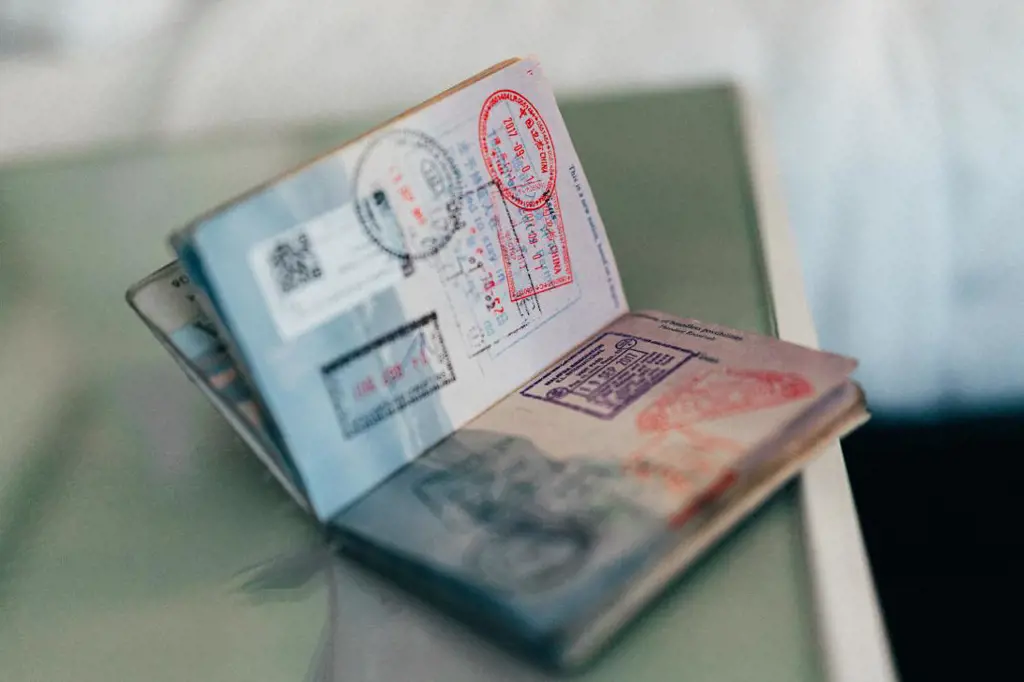
If you are an international student studying in the United States on an F-1 visa, and you are planning to travel overseas during your academic program, there are specific steps you need to follow to ensure a smooth and hassle-free trip.
Step 1: Check your passport's expiration date
Before you travel, it is important to check the expiration date on your passport. Most countries require that your passport be valid for at least six months beyond your planned departure date. If your passport is set to expire within the next six months, you should renew it before you travel.
Step 2: Obtain the necessary travel documents
Depending on your destination, you may need to obtain additional travel documents such as a visa or travel authorization. Research the travel requirements for your specific destination well in advance of your trip to ensure you have the necessary documents in order.
Step 3: Maintain your F-1 visa status
To re-enter the United States after your trip, it is crucial to maintain your F-1 visa status. This includes attending all required classes, maintaining full-time enrollment, and staying in good academic standing. Make sure to consult with your designated school official (DSO) to ensure you are meeting all the requirements for maintaining your F-1 visa status.
Step 4: Notify your DSO of your travel plans
Before you travel, it is important to notify your DSO of your planned trip. They will need to update your SEVIS record with your travel information, including the dates and destinations of your trip. This ensures that your F-1 visa status remains valid and that you will be able to re-enter the United States without any issues.
Step 5: Take copies of important documents
Before you leave for your trip, make copies of all important documents such as your passport, visa, I-20 form, and any other relevant immigration documents. Keep the copies separate from the originals and store them in a secure location. In the unfortunate event that you lose your original documents while traveling, having copies will make it easier to replace them.
Step 6: Check travel advisories and health requirements
Check the travel advisories for your destination to ensure there are no travel restrictions or safety concerns. Additionally, research any health requirements such as vaccinations that are necessary for travel to certain countries. Make sure to comply with all travel advisories and health requirements to ensure a safe and smooth trip.
Step 7: Purchase travel insurance
Consider purchasing travel insurance to protect yourself from unexpected events such as medical emergencies, trip cancellations, or lost luggage. Travel insurance can provide peace of mind and financial protection during your trip.
Step 8: Pack wisely
When packing for your trip, make sure to pack only essential items and abide by the airline's baggage restrictions. Check if there are any specific requirements or restrictions for carry-on or checked baggage, and pack accordingly. It is also a good idea to pack photocopies of your important documents in your carry-on bag for easy accessibility.
In conclusion, before traveling overseas on your F-1 visa, it is important to check your passport's expiration date, obtain the necessary travel documents, maintain your F-1 visa status, notify your DSO of your travel plans, take copies of important documents, check travel advisories and health requirements, purchase travel insurance, and pack wisely. Following these steps will help ensure a successful and stress-free trip.
How Can I Travel to the Bahamas on an H1B Visa?
You may want to see also
Frequently asked questions
Yes, as an F-1 visa holder, you are allowed to travel overseas. However, there are certain requirements and considerations you need to keep in mind before you plan your trip.
It is important to have a valid visa before you travel overseas. Ensure that your F-1 visa stamp is not expired and that you have valid immigration documents, such as an I-20 form and a valid passport, before you leave the United States.
As an F-1 visa holder, you usually have a limited amount of time allowed for travel outside of the United States. Generally, you are allowed to stay outside of the country for up to 5 months (150 days) without affecting your visa status. However, it is important to consult with your designated school official (DSO) regarding your specific travel plans to ensure compliance with regulations.
When traveling overseas on your F-1 visa, it is important to carry certain documents with you. These include your passport, valid F-1 visa stamp, I-20 form endorsed by your designated school official (DSO), proof of financial support, and any other relevant travel documents. It is also a good idea to carry copies of these documents in case of loss or theft.




